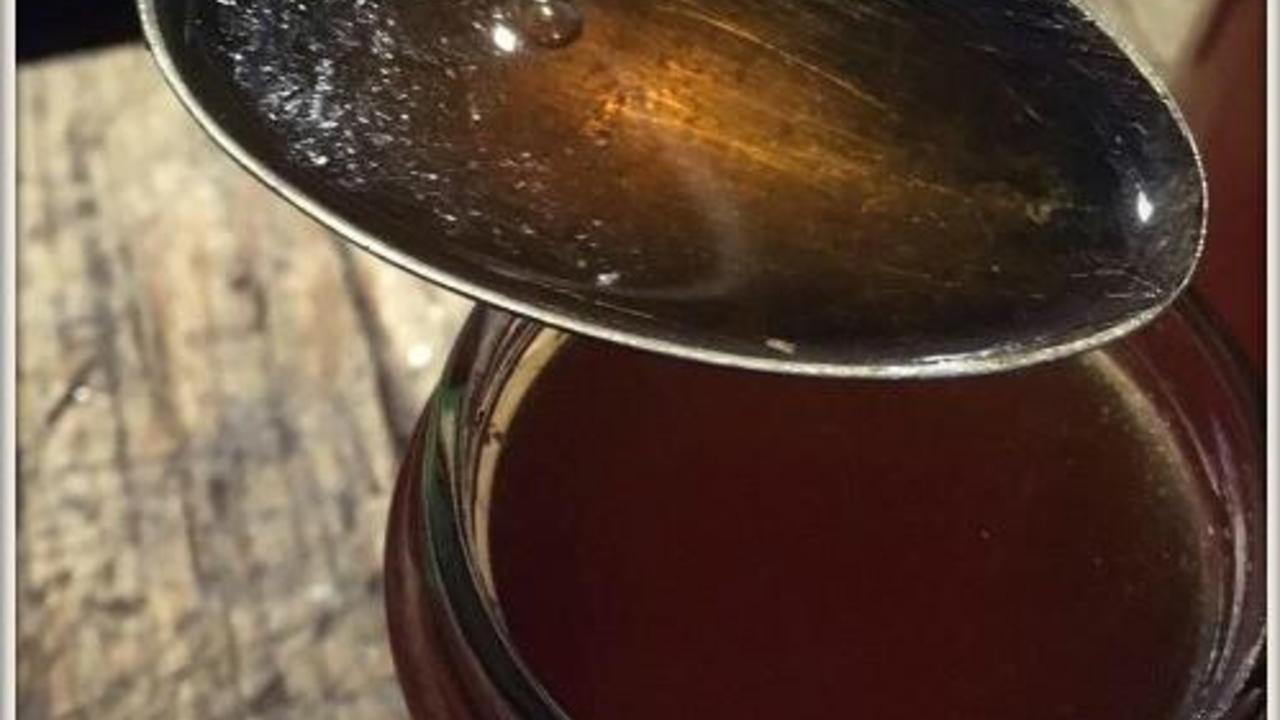How to prepare a Garlic Oxymel (syrup)
Aug 20, 2020
Rainy days at my house always conjures the brewing of 'something' in my kitchen, and it just so happens that my garlic has finished its' 2week-long 'digestion' in apple cider vinegar, and is all ready to be combined with the other herbs and honey, to create a batch of 'Garlic Oxymel', all ready for the Winter months..

An oxymel is a liquid medicinal preparation that is based on vinegar (I use Apple cider vinegar) and honey. From there, you can add a variety of herbs to the mix, depending on what you intend on using it for. Oxymels are particularly handy when it comes to masking the strong flavours of some herbs, and making them more palatable for children (as well as the fussier adults).
The two main ingredients of this preparation, vinegar and honey, and mildly expectorant and antimicrobial themselves, so it’s a natural progression that a cough and cold remedy can be made from this combination. I should also point out that the addition of honey also delivers the medicinals directly to the throat area, and allows it to 'stick' to the area for longer than a tincture or infusion.. so this is a perfect go-to for something like a sore throat, swollen glands, mucous and congestion in the brochials, and even ear aches (due to the eustacian tubes draining into the throat).
Because im always working with children in the clinic, today I thought I would make an oxymel that would suit the entire family and act as a powerful expectorant and antibiotic for all those Wintery head colds, blocked noses and sore throats. To go in with the garlic, I have chosen two other herbs which are expectorant in action, but also soothing to the bronchials and mucous membranes.

The herbs I've chosen are also relatively benign in taste (aside from the garlic), which is helpful of course when you are dealing with families.
The first herb is the leaf of the Mullein plant, or Verbascus Thapsus. As well as being demulcent (soothing) and expectorant in action, the leaves are also interestingly astringent. This means that they can not only soothe irritated mucous membranes, but can help to dry up excessive mucous, like in the case of a head cold or rhinitis. It is also mildly sedative and calming in nature, once again a helpful action when unwell with a head cold or congestion.
The second herb I have chosen is Marshmallow Root, Althea officinalis.

Marshmallow is an excellent demulcent and emollient herb, so is very specific when it comes to soothing the mucous membranes of the body (in this case the bronchials and throat.) Because of its soothing qualities, I often use Marshmallow preparations where a person has irritations such as bronchitis.
Other herbs I might suggest for an oxymel are the Plantains (both Ribwort and Broadleaf), cayenne or chilli, yarrow, thyme, sage, hyssop, or even oregano. (Just have a think about the application and the flavours at the end). Today I will explain how to prepare a traditional garlic oxymel, and show you which herbs I have chosen to add to mine, and why.
Depending on which herbs you would like to add to yours, there are also a few variations on the preparation of this remedy.

Basic Recipe for a Garlic Oxymel
The basic recipe for a garlic oxymel goes something like this:
2.5:1 ratios of vinegar to honey as a base, so for every 100ml of vinegar you need 40ml of honey
(Recipe per 100ml of vinegar)
- 100ml Apple Cider Vinegar
- 40ml Honey
- 10 cloves of garlic
- Peel and crush garlic cloves
- Place into a glass jar and cover in vinegar
- Let stand (digest) in a warm place out of direct sunlight for 1-2weeks
- Pour garlic vinegar mixture into a stainless steel pot
- Let the herbs simmer on low heat for approx. 5mins, then turn off the heat and add the honey. and stir through
- Strain the garlic out and decant the oxymel into glass bottles or jars.
This remedy is naturally very antibiotic so will have a shelf life of well over a year if stored in a cool dark place

Variations
If you are adding any root herbs to the blend: Roots and woodier herbs should be added into the vinegar and garlic mixture at the beginning of the
If you are adding any leaf herbs to the blend: Leafy aerial parts (especially if you are using fresh leaves such as Plantain or Mullein), should be added at the simmering stage and not heated too much for too long. The idea is that you use as little heat as possible to ensure you do not break down the delicate mucilages.
Schedule a Naturopathic Consultation for a combination of Biomedical or Functional testing, along with the more traditional Naturopathic protocols that are well and truly time tested.
Stay connected with news and updates!
Join our mailing list to receive the latest news and updates from our team.
Don't worry, your information will not be shared.
We hate SPAM. We will never sell your information, for any reason.

